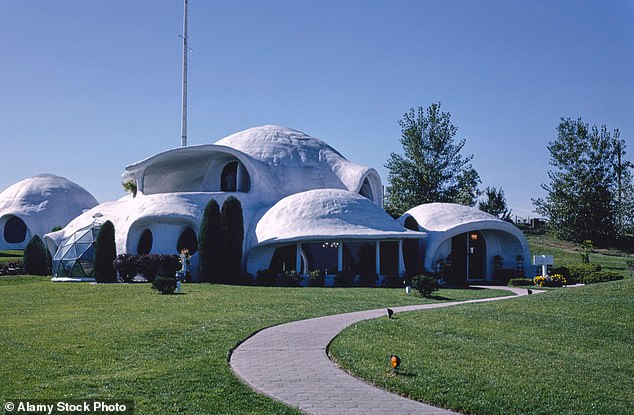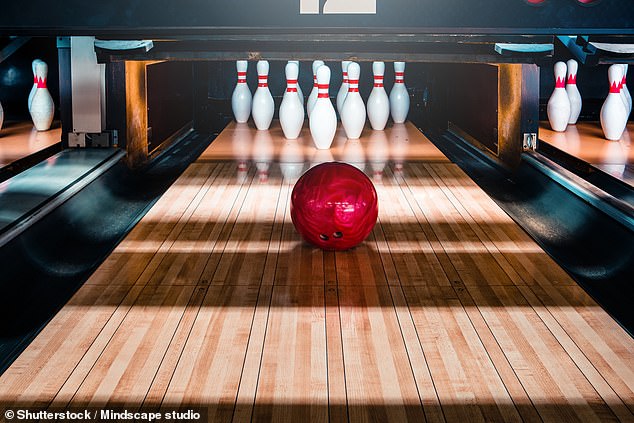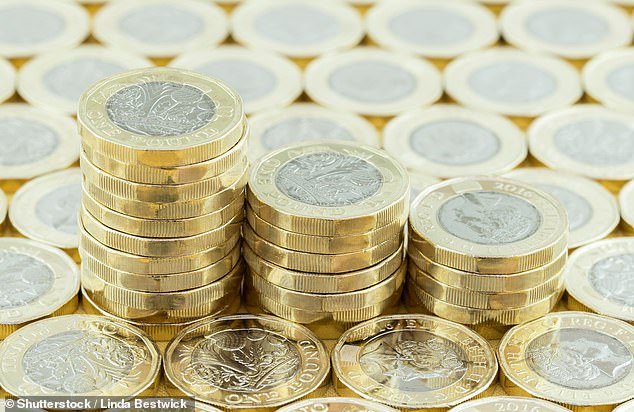QUESTION Do any of the Xanadu Houses, a series of the first computerized houses built in the US, still survive?
The Xanadu Houses were experimental houses designed to showcase new construction and home automation technologies. They were built in Wisconsin Dells, Wisconsin; Kissimmee, Florida; and Gatlinburg, Tennessee. None survive.
Xanadu was the brainchild of Bob Masters, a pioneer of rigid insulation as a building material. He created a system of giant balloons covered in polyurethane foam, which was then left to harden, forming a series of domed structures.
Xanadu was a reference to the summer capital of China’s Yuan dynasty, mentioned in the poem Kubla Khan by Samuel Taylor Coleridge: “In Xanadu arose Kubla Khan, a majestic pleasure-dome decree.”
The first property in Wisconsin Dells was designed by Stewart Gordon and built by Masters in 1979. It was 4,000 square feet with seven bedrooms. It was a popular attraction and received more than 100,000 visitors in its first year.
Xanadu’s second house was inspired by Disney’s Epcot Center in 1982. Epcot stood for Experimental Prototype Community of Tomorrow, Disney’s celebration of man-made design and technology. The house in Kissimmee was designed by Roy Mason and opened in 1983. It had 17 rooms and 6,000 square feet.

The Xanadu houses were built in Wisconsin Dells, Wisconsin; Kissimmee, Florida; and Gatlinburg, Tennessee. none survive
The rooms were controlled by Commodore computers. The kitchen had an ‘autochef’, an electronic dietitian who planned and produced balanced meals and introduced concepts such as teleshopping, CCTV and a health monitoring system. Unfortunately, these ideas were far ahead of technology, so visitors were not impressed.
A third Xanadu House opened in Gatlinburg in June 1982. It was 7,600 square feet and cost $350,000 to build. But the “futuristic” technology quickly became obsolete. The houses in Wisconsin and Tennessee were demolished in the late 1980s. The house in Kissimmee operated as a visitor attraction until 1996. It was finally abandoned and demolished in October 2005.
Matthew Walsh, Malvern, Worcs.
QUESTION When was bowling invented?
The history of bowling is long.
Sir Flinders de Petrie, emeritus professor of Egyptology at the University of London, identified the essential components of a game similar to bowling in the tomb of an Egyptian boy dating to 5,200 BC
Bowling balls were rounded stones and have appeared in other parts of Europe and also on the islands of Polynesia. Evidence was also found in Polynesia that flat discs, 4 to 5 cm in diameter, were used in addition to ball-shaped objects.
A game using larger diameter wooden discs is still played in Northamptonshire pubs, with the 9 pins mounted on a table with padded sides and backrest to prevent injury to spectators. I play this for my pub team in a local league.


Sir Flinders de Petrie, emeritus professor of Egyptology at the University of London, identified the essential components of a bowling-like game in the tomb of an Egyptian boy dating back to 5200 BC (file image)
The form of bowling played today originated in the Middle Ages in northern Europe, where nine skittles were used instead of ten.
In the year 1300 there is evidence that in northern Germany this game was played with only three bowls, and in other areas the number of bowls reached up to 17. Martin Luther, founding father of the Reformation, was an enthusiastic bowler.
Bowling or bowling of this type is still played in the United Kingdom, Ireland and parts of Europe, especially Germany. In Britain, nine pins are used to form a diamond formation, rather than the triangular shape required for ten-pin bowling.
The first indoor bowling alley opened in 1830 at the Knickerbocker Hotel in New York City. It had three lanes and a hardened clay bowling surface. However, the standard was nine pins, not ten. The transition occurred when the state of Connecticut, concerned about control of gambling by gambling syndicates, banned it in 1841. New York followed suit.
However, the laws specifically stated that the ban applied to a game played with nine pins or pins. With the introduction of a tenth, the law against gambling was circumvented and the modern game was born.
In 1875, nine New York City bowling clubs met and formalized a standard set of rules for the game. Although they have changed over the years, they are the first rules of the game that we know today and were subsequently adopted by all bowling clubs.
The automatic pin resetter was invented by engineer Gottfried Schmidt in 1936 and introduced to bowling alleys in 1952.
Bob Cubitt, Northampton.
QUESTION Who coined the term “venture capitalist”?
Venture capitalism is a form of private equity financing that investors provide to startups and small businesses with perceived long-term growth potential.
In exchange for the investment, venture capitalists typically receive equity ownership in the company.
Although these companies can be recognized in the early days of maritime commerce, their modern application to business creation began in the postwar United States.
When John Hay Whitney returned from World War II, he thought the free enterprise economy needed a new dimension.


Venture capitalism is a form of private equity financing that investors provide to startups and small businesses with perceived long-term growth potential (file image)
He wanted a place where an entrepreneur with a high-risk dream beyond the standards of the conventional banking industry could get seed money and business advice in exchange for capital.
He contributed $10 million and, in 1946, JH Whitney & Company was born, the first company of its kind.
At first, the press insisted on referring to it as an investment bank. A new term was required that incorporated “risk” and “adventure.”
Benno C. Schmidt, managing partner of JH Whitney & Company, coined the term in the early 1950s. He took “private venture capital” and shortened the wording, naming what has become a $400 billion industry.
JP Smith, London E1.
Is there a question you want to know the answer to? Or do you know the answer to a question here? Write to: Charles Legge, Replies to Correspondents, Daily Mail, 9 Derry Street, London W8 5HY; or email charles.legge@dailymail.co.uk. A selection is published, but we cannot establish individual correspondence.
